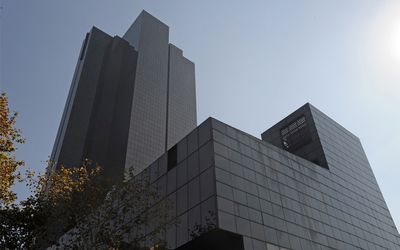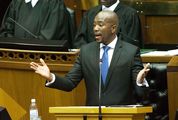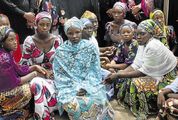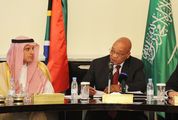AT LEAST now we know why the South African Reserve Bank’s monetary policy committee was worried.
It is not that the Bank sees Statistics SA’s inflation numbers any earlier than anyone else, but it could not have been as surprised as some in the market clearly were by Wednesday’s release showing inflation had risen to 7% in February — the highest in almost seven years.
The committee’s decision last week to raise the repo rate (coincidentally) to 7% means that in real, inflation-adjusted terms the repo rate is now neutral — so monetary policy is not particularly harsh; even if interest rates appear steep, if inflation is going up and the Bank wants to prevent it from spiralling, further interest rate hikes will be inevitable.
The signs are not good. Wednesday’s headline inflation number was higher than the median 6.8% expectation of analysts surveyed by Bloomberg, and was up from 6.2% in the previous month.
Food and transport costs are the big drivers. Both are being affected by the rand-dollar exchange rate, which has fallen by about 12% in the past six months. Although the rand rallied briefly in the past week, it is still under plenty of pressure from the threat of a rating downgrade and SA’s political instability. Then there’s the drought, which is expected to drive up food prices later this year, when SA has to start importing maize — despite some late rains. Reuters reports that traders and analysts have cut their estimates of this year’s crop to an average 6.7-million tonnes, which is less than half the 2014 harvest.
All of this will leave the Bank with little alternative but to raise interest rates further. That can’t help an already weak growth and employment outlook. Figures out yesterday showed formal sector, nonfarm employment was all but flat in the fourth quarter, compared with the same period in 2014.
The economy is seeing some gains in employment in the trade and services sectors, but this is hardly enough to offset the job losses in mining, manufacturing and construction, as the production side of the economy is increasingly hollowed out.
The quarterly formal sector employment figures from Statistics SA are different from the quarterly labour force statistics that, unaccountably, showed increases in those employed in agriculture and in both formal and informal sectors when these were published recently.
According to the labour force survey, which draws on household surveys and has switched to using a new sample, the total number of working people rose by almost 5% over the year, to 21.2-million in the fourth quarter.
Inexplicably, employment rose even in some of the most beleaguered sectors including agriculture and mining, although in both surveys, the services and trade sectors tend to come out as the strongest jobs creators. That shows our economic policy makers ought to be taking these sectors more seriously as engines of growth and job creation.
SA’s jobless rate is still well more than 24%, even on the labour force survey’s more rosy view. And in a context in which global demand is expected to remain muted and commodity prices have crashed, looking to sectors such as mining and manufacturing for job creation is all but a lost cause.
Rather, we should be thinking differently about SA’s opportunities and how to exploit those to generate job-creating growth. That means unlocking the constraints that hold back the tourism sector, which should be pumping, given the weak exchange rate. The latest figures show tourism is gaining, but much more could be done. There is much more to be done too to leverage the potential of SA’s agricultural sector, which could do much more to export and to create jobs.
The latest round of data simply demonstrates again what investors and rating agencies are telling us — SA needs to get on with the deep structural reforms needed to get the economy to grow. And it needs to do so now.

The Reserve Bank in Pretoria. Picture: FINANCIAL MAIL
AT LEAST now we know why the South African Reserve Bank’s monetary policy committee was worried.
It is not that the Bank sees Statistics SA’s inflation numbers any earlier than anyone else, but it could not have been as surprised as some in the market clearly were by Wednesday’s release showing inflation had risen to 7% in February — the highest in almost seven years.
The committee’s decision last week to raise the repo rate (coincidentally) to 7% means that in real, inflation-adjusted terms the repo rate is now neutral — so monetary policy is not particularly harsh; even if interest rates appear steep, if inflation is going up and the Bank wants to prevent it from spiralling, further interest rate hikes will be inevitable.
The signs are not good. Wednesday’s headline inflation number was higher than the median 6.8% expectation of analysts surveyed by Bloomberg, and was up from 6.2% in the previous month.
Food and transport costs are the big drivers. Both are being affected by the rand-dollar exchange rate, which has fallen by about 12% in the past six months. Although the rand rallied briefly in the past week, it is still under plenty of pressure from the threat of a rating downgrade and SA’s political instability. Then there’s the drought, which is expected to drive up food prices later this year, when SA has to start importing maize — despite some late rains. Reuters reports that traders and analysts have cut their estimates of this year’s crop to an average 6.7-million tonnes, which is less than half the 2014 harvest.
All of this will leave the Bank with little alternative but to raise interest rates further. That can’t help an already weak growth and employment outlook. Figures out yesterday showed formal sector, nonfarm employment was all but flat in the fourth quarter, compared with the same period in 2014.
The economy is seeing some gains in employment in the trade and services sectors, but this is hardly enough to offset the job losses in mining, manufacturing and construction, as the production side of the economy is increasingly hollowed out.
The quarterly formal sector employment figures from Statistics SA are different from the quarterly labour force statistics that, unaccountably, showed increases in those employed in agriculture and in both formal and informal sectors when these were published recently.
According to the labour force survey, which draws on household surveys and has switched to using a new sample, the total number of working people rose by almost 5% over the year, to 21.2-million in the fourth quarter.
Inexplicably, employment rose even in some of the most beleaguered sectors including agriculture and mining, although in both surveys, the services and trade sectors tend to come out as the strongest jobs creators. That shows our economic policy makers ought to be taking these sectors more seriously as engines of growth and job creation.
SA’s jobless rate is still well more than 24%, even on the labour force survey’s more rosy view. And in a context in which global demand is expected to remain muted and commodity prices have crashed, looking to sectors such as mining and manufacturing for job creation is all but a lost cause.
Rather, we should be thinking differently about SA’s opportunities and how to exploit those to generate job-creating growth. That means unlocking the constraints that hold back the tourism sector, which should be pumping, given the weak exchange rate. The latest figures show tourism is gaining, but much more could be done. There is much more to be done too to leverage the potential of SA’s agricultural sector, which could do much more to export and to create jobs.
The latest round of data simply demonstrates again what investors and rating agencies are telling us — SA needs to get on with the deep structural reforms needed to get the economy to grow. And it needs to do so now.




















Change: -0.47%
Change: -0.57%
Change: -1.76%
Change: -0.34%
Change: 0.02%
Data supplied by Profile Data
Change: -1.49%
Change: 0.09%
Change: -0.47%
Change: 0.00%
Change: -0.02%
Data supplied by Profile Data
Change: 0.48%
Change: 0.91%
Change: 0.38%
Change: -0.15%
Change: 0.93%
Data supplied by Profile Data
Change: 0.25%
Change: -0.32%
Change: 0.33%
Change: -1.22%
Change: -1.41%
Data supplied by Profile Data